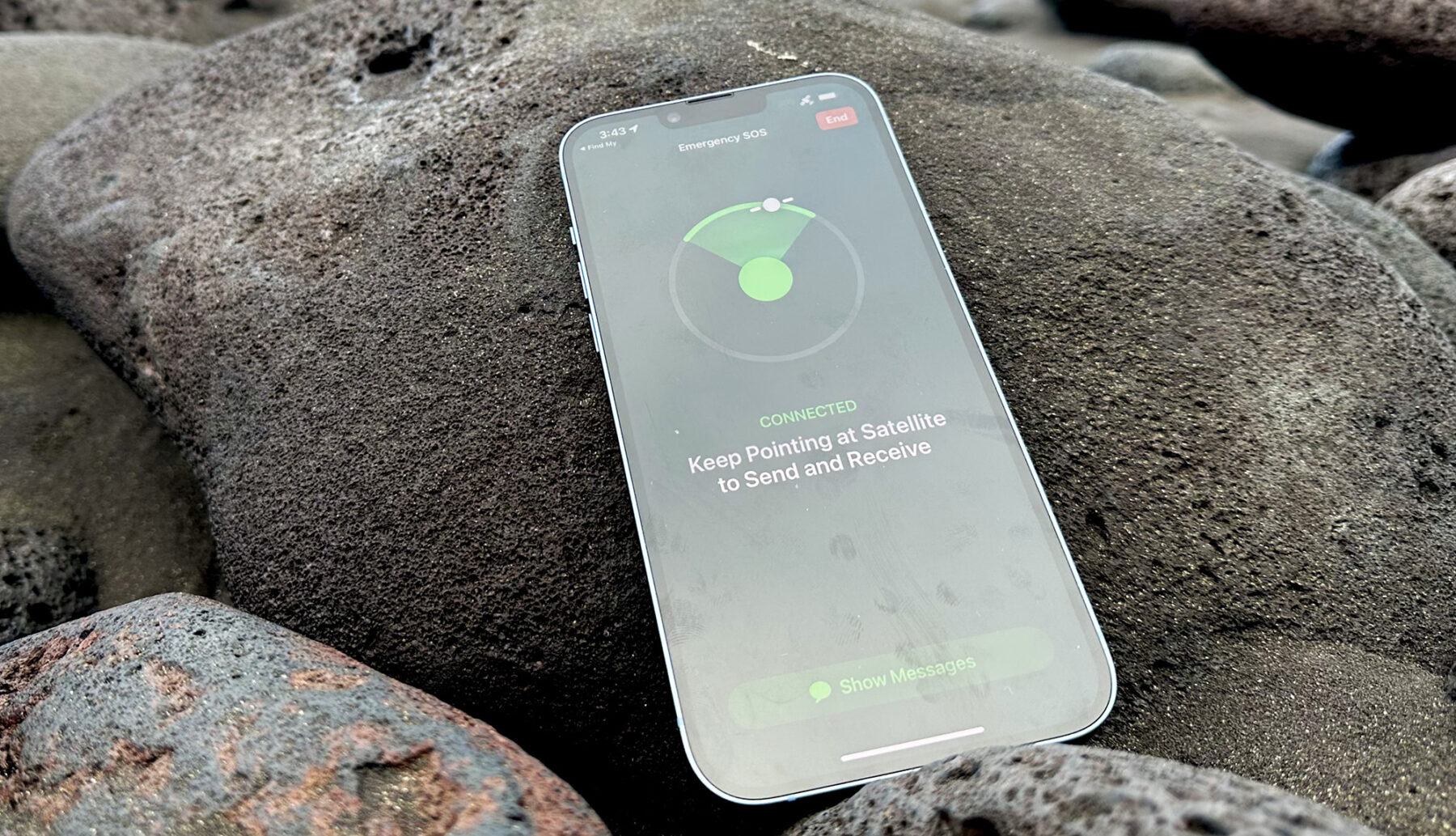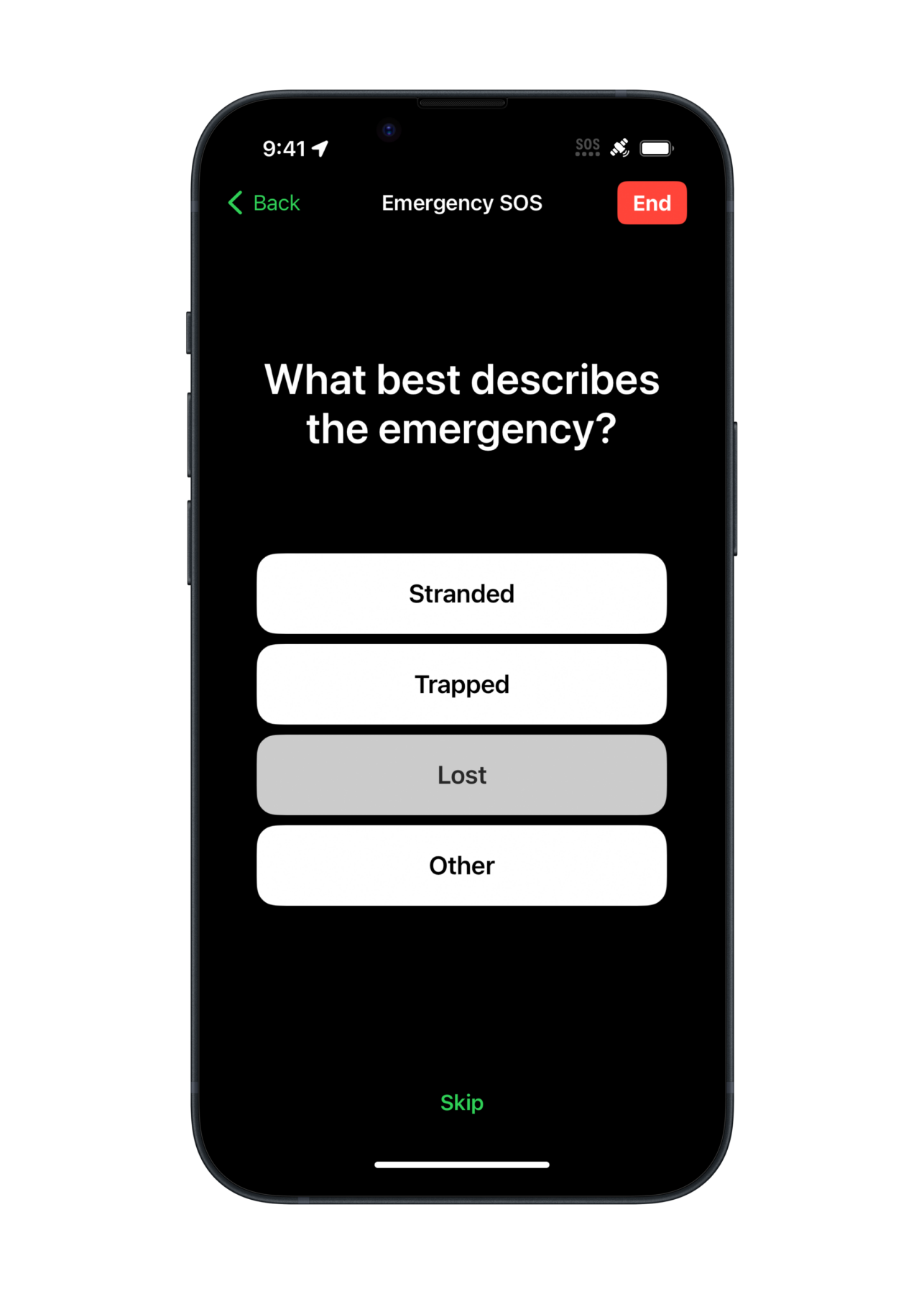Apple’s Emergency SOS via satellite now available in Australia

The safety net of emergency GPS communication is about to expand with the introduction of Apple’s Emergency SOS via satellite becoming available to iPhone 14 users in Australia and New Zealand from 15th May, 2023.
For some this will be yet another feather in the cap of Big Brother and further opportunity for enforcement of nanny-state rules leading to a loss of ‘true adventure’, but for most it will be a blessing, a resource saver and potential life saver. Here at Australian Geographic Adventure (AGA) we are advocates of ‘be prepared’ and view emergency satellite back-up as offering more pros than cons, especially when it comes to saving lives beyond the reach of cellular coverage.
Of course, satellite communication is by no means new technology and the last decade has seen brick-sized satellite phones and GPS units shrink into genius miniature combo-devices like the Garmin InReach mini. In 2023 however, Apple brings satellite safety to the masses.
How it works
Emergency SOS via Satellite is a service now available to all iPhone 14 (and beyond) users, free for two years from activation (Apple is yet to confirm whether to will remain free or become part of a subscription service beyond two years). The emergency SOS via satellite feature seamlessly integrates, and further enhances, fall and crash detection available on Apple devices such as iPhone and Apple Watch.
Apple’s latest iPhone tech can not only manually activate SOS but also has an ability to auto detect a fall, mountain bike crash or vehicle accident, of a user outside of cellular and Wi-Fi coverage and attempt to contact emergency services (even if the patient is unresponsive). If no network is found, the device will now attempt to connect to one of Globalstar’s 24 satellites in low-earth orbit to relay critical information to local emergency services, family, and friends, via Apple-trained emergency specialists.
Unresponsive patients will need some luck on their side for their device to find an orbiting satellite, however responsive patients will be instructed on how to attain and retain a satellite connection and be prompted to complete a short questionnaire to best determine the type of emergency response required.
Questionnaire responses, location, altitude, iPhone battery level and Medical ID, are relayed to Apple-trained emergency specialists who will then stay in contact with the user as long as is either possible or required. A text compression algorithm reduces the average size of messages by 3x to further enable rapid transmission of critical information. Emergency contacts in the users Apple’s Health app will be able to view the location and emergency message transcripts of a patient (in real time if they’re an iOS user), on their own devices.
Our thoughts
We see unlimited potential for Emergency SOS via Satellite and certainly view the feature as a sought after safety option for those travelling backcountry this winter, trekking or riding remote trails, or even driving to dad’s farm on a lonely country road. A bonus of the new satellite feature is an ability to reassure friends and family of whereabouts while traveling in an area with no cellular or Wi-Fi coverage, via the Find My app.
There is little iPhone users need to do other than update to the latest IOS and ensure they fill out medical ID in the Apple Health App. Sensibly, Apple have also provided a ‘demo’ mode that connects to satellites in range (without contacting emergency services), allowing users to experience the process and familiarise themselves with the service before stepping off the beaten path.

As with any new tech, it is not flawless and users should be aware that satellite connectivity and data transfer is dramatically reduced when a device is obstructed by foliage, high cliffs, building or mountains, and does not work inside. However, such limitations are the same for all satellite transceivers and such hindrances should be expected from any device.
Here at AGA, we hope no readers ever have a need to use emergency SOS via satellite, but we reckon if they do, they can at least be reassured that a dedicated satellite comms device is no longer the domain of hardcore adventurers and is now accessible to anyone on the latest iPhone 14.
See Apple for more info.






